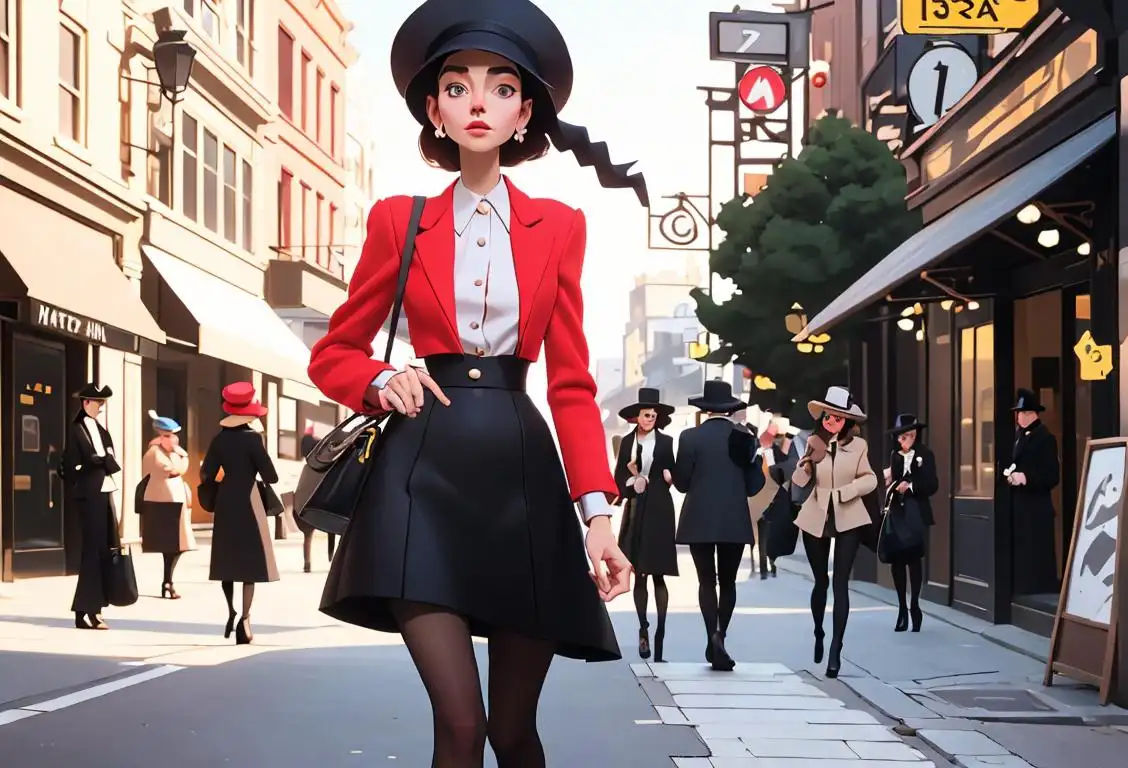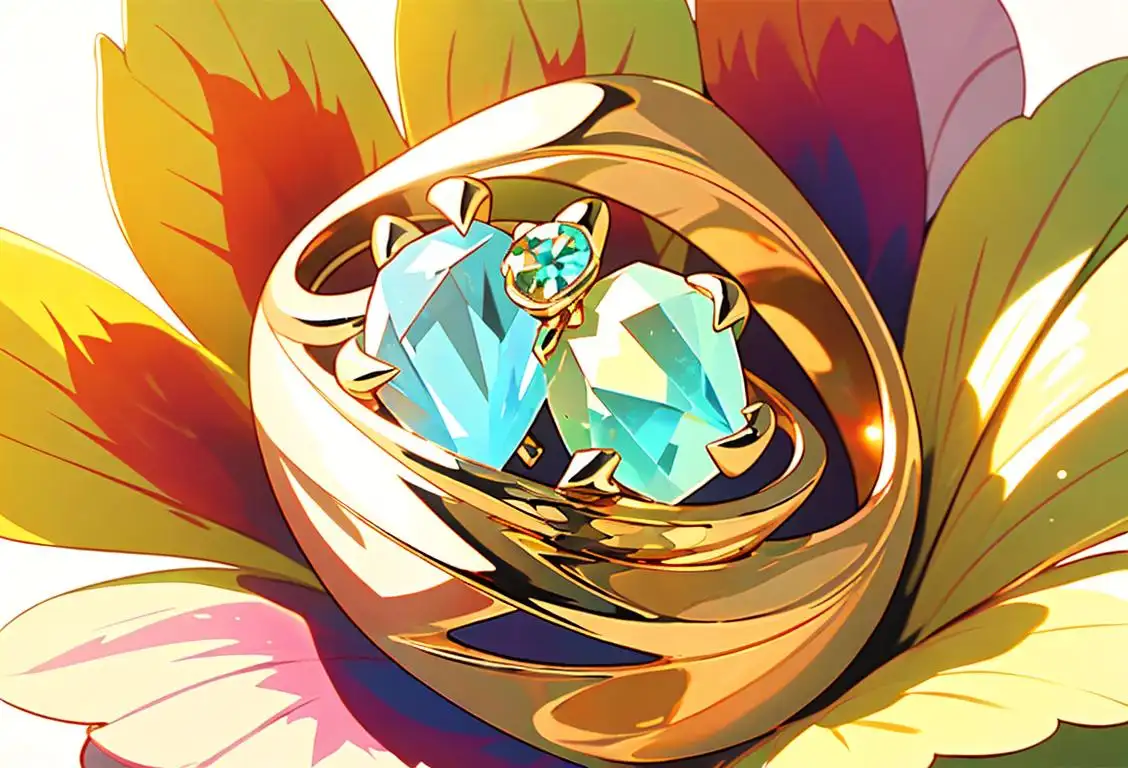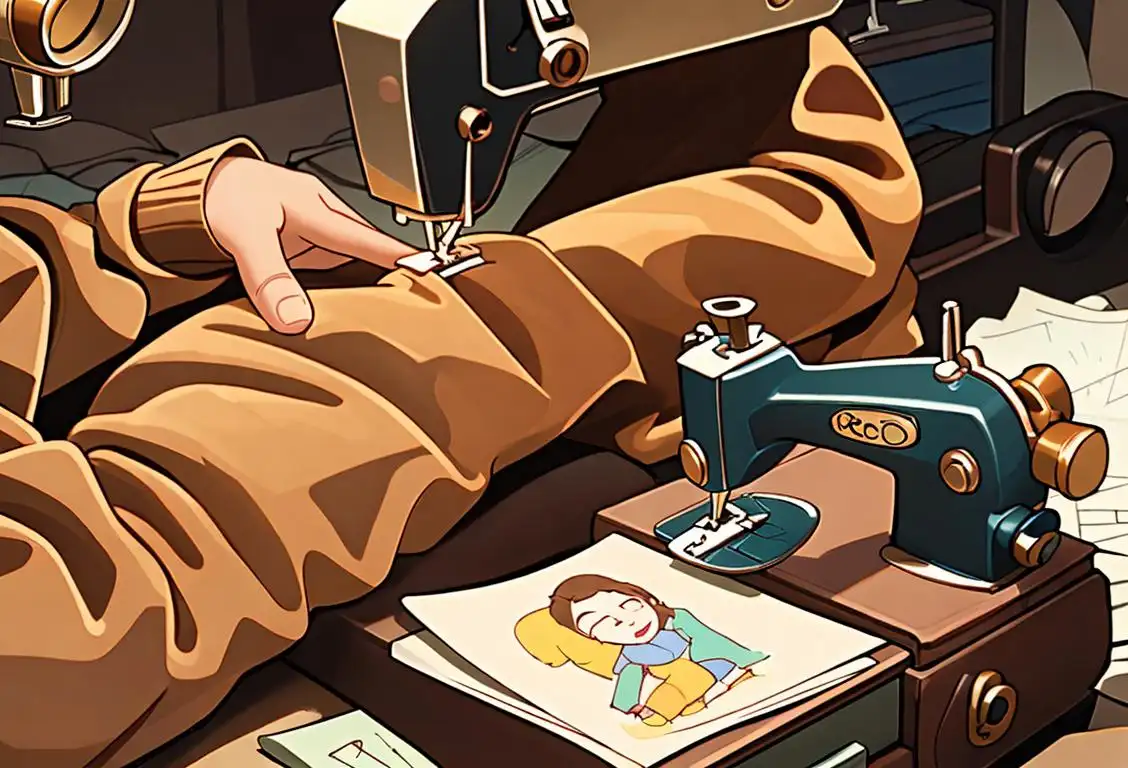National Stockings Day

Hey there! It's time to celebrate National Stockings Day! Get ready to strut your stuff with style and a touch of sass. Whether you're a fan of these fashionable leg coverings or just curious about their history, we've got you covered. So, slip on your coziest pair and let's dive into the captivating story of stockings!
When is Stockings Day?
It's national stockings day on the 15th May.
The Origins of Stockings
Stockings have a long and fascinating history that dates back centuries. Can you believe that the earliest known stockings were worn by men? Yes, you heard that right! In the 16th century, European men were rocking stockings as a symbol of wealth and status. These early stockings were made from silk or wool and were quite the fashion statement.
But it wasn't until the 20th century that stockings became primarily associated with women's fashion. With the invention of nylon in the 1930s, stockings took a leap forward, gaining popularity among women worldwide. They quickly became a must-have accessory, adding elegance and allure to any outfit.
The Rise of Pantyhose
As fashion continued to evolve, stockings faced some competition from a modern invention known as pantyhose. These one-piece wonders combined both stockings and underpants, providing a convenient alternative to traditional stockings. Pantyhose gained massive popularity in the 1960s and 1970s, becoming a staple in many women's wardrobes.
While pantyhose made their mark, stockings didn't fade into obscurity. In fact, they found their own special place in fashion. Today, stockings are favored for adding a touch of glamour to special occasions, such as weddings and formal events.
Celebrating National Stockings Day
Now that you know a bit about the history of stockings, it's time to celebrate in style! Gather your loved ones for a fun-filled day of embracing your inner fashionista. Why not organize a fashion show where everyone can flaunt their favorite pair of stockings? Don't forget to snap some photos and share them on social media using the hashtag #StockingsDay.
If you're feeling adventurous, try experimenting with different styles of stockings. From classic sheer to bold and patterned, there's a pair out there to match every personality. And remember, National Stockings Day is also a great opportunity to support local businesses. Check out independent boutiques or online stores that offer a wide range of stocking options.
History behind the term 'Stockings'
16th century
The Beginning of Stockings
Stockings, also known as hose, originated in the 16th century. They were initially made of woven cloth and wore by men as a regular part of their clothing. These early stockings were similar to long socks and were typically tied with garters or ribbons at the top to keep them from falling down.
12th century
First known use of stockings
The term 'stockings' originated in the 12th century. It referred to close-fitting coverings for the legs and feet that were made of cloth or leather. These early stockings were primarily worn by men and were separate pieces for each leg.
17th century
The Introduction of Knitted Stockings
In the 17th century, knitted stockings came into existence. Knitting allowed for a more snug and comfortable fit, and knitted stockings quickly gained popularity. They were initially made from wool and were expensive, being worn mostly by the elite. Over time, the production of knitted stockings expanded to include materials like silk and cotton, making them more accessible to a wider range of people.
16th century
Introduction of knitted stockings
Knitted stockings were first introduced in the 16th century. This new technique allowed stockings to be made in one piece, providing a more comfortable and secure fit. Knitted stockings became extremely popular and were worn by both men and women.
18th century
The Rise of Embroidered Stockings
During the 18th century, stockings became a fashion statement. Embroidered stockings adorned with intricate patterns and designs became highly desirable. These stockings were often made of silk or fine cotton, and the embroidery was done by hand. They were considered a lavish accessory and were frequently worn by women of higher social status.
17th century
Silk stockings gain popularity
Silk stockings gained popularity in the 17th century. Wealthy individuals coveted silk stockings due to their luxurious feel and appearance. The demand for silk stockings created a thriving industry, and they became a symbol of status and wealth.
19th century
Industrial Revolution and the Mass Production of Stockings
The Industrial Revolution in the 19th century brought significant advancements in textile manufacturing, including the production of stockings. With the invention of machines like the knitting machine, stocking production shifted from a primarily handmade process to a mechanized one. This led to mass production and made stockings more affordable and widely available to the general public. This period marked a shift in stockings from being a luxury item to a common garment.
18th century
Introduction of the industrial knitting machine
The industrial revolution in the 18th century brought significant advancements in textile manufacturing. The invention of the knitting machine revolutionized stocking production. Mass production became possible, making stockings more affordable and accessible to a wider range of people.
20th century
The Advent of Nylon Stockings
The invention of nylon in the early 20th century revolutionized the world of stockings. In 1939, DuPont introduced nylon stockings at the New York World's Fair, and they quickly became a sensation. Nylon stockings were more durable, sheer, and had a stretchy fit. The popularity of nylon stockings soared, and they became a symbol of femininity and glamour. During World War II, there was even a shortage of nylon due to its use in the war effort.
1920s
Flapper era and fashionable stockings
In the 1920s, stockings took on a new significance during the flapper era, characterized by its focus on liberation and fashion. Flapper women embraced shorter hemlines, which led to the popularity of sheer stockings. These stockings were often embellished with elaborate designs and embroidery.
21st century
Stockings as a Fashion Statement
In the 21st century, stockings continue to be a popular fashion accessory, albeit with some variations. They are available in different styles, including traditional stockings worn with garters, thigh-high stockings, and pantyhose. Stockings are often worn as a fashion statement, particularly for special occasions or as a way to add a touch of elegance to an outfit. They have a rich history and have evolved to become a versatile and iconic garment in the world of fashion.
1940s
Nylon stockings and World War II
During World War II, silk stockings became scarce due to wartime efforts. In response, nylon stockings were introduced in 1940. Nylon stockings quickly gained popularity due to their affordability, durability, and smooth texture. They became a symbol of femininity and glamour.
1960s
Fishnet stockings and the rise of counterculture
In the 1960s, fishnet stockings gained popularity as a rebellious fashion statement during the rise of counterculture. They embodied a sense of liberation and non-conformity. Fishnet stockings continue to be associated with alternative fashion and subcultures to this day.
Did you know?
Did you know that the world record for most stockings put on in one minute is 36? That's some serious speedy stocking skills!Tagged
fun loved ones fashionFirst identified
22nd March 2015Most mentioned on
15th May 2020Total mentions
660Other days
Stripes Day
Towel Day
Cardigan Day
Crown Day
Felt Hat Day
Watch Day
Jewel Day
Wear Your Lilly Day
Stockings Day
Corduroy Appreciation Day








